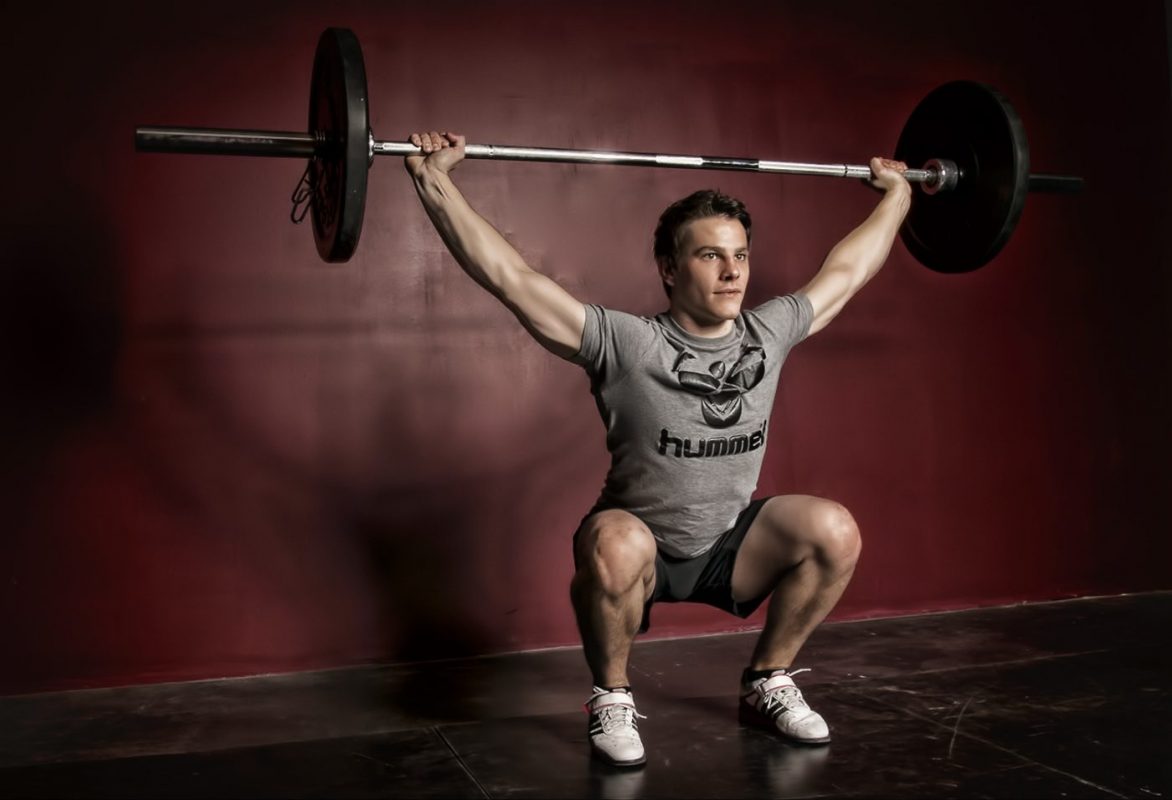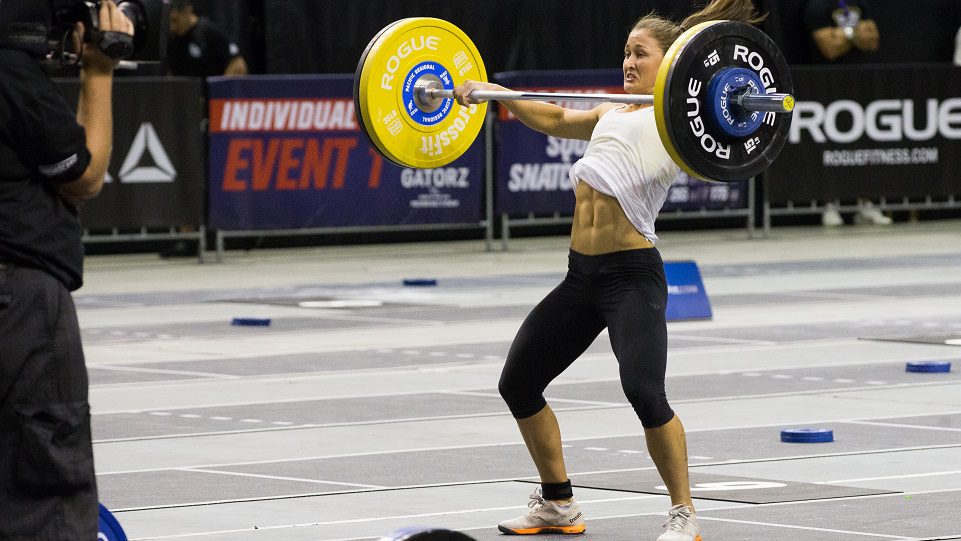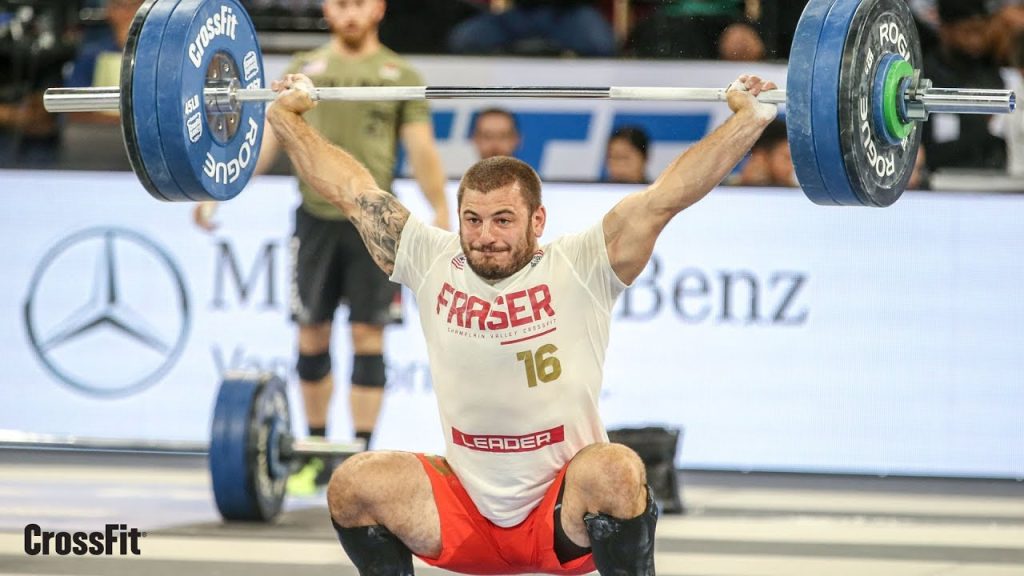The snatch (also known as the ‘squat snatch’ in some CrossFit circles) is the fastest lift you’ll do in CrossFit.
It’s also notoriously one of the more difficult movements to master, due to the large amount of power, speed, strength, coordination and flexibility needed to complete a heavy snatch.
If you care about CrossFit, this is one lift you can’t not be good at.
It’s come up during the CrossFit Open, and the best of the best are putting up ridiculous snatch numbers at the CrossFit Games.
In this article, we’ll look at what a snatch is, how to set up for a rep, some tips to improve your snatch technique, and the benefits of the lift.
What Is A Snatch?

A snatch is 1 of 2 Olympic weightlifting exercises, along with the clean and jerk..
A full snatch is performed by moving the barbell from the floor to a standing locked out position overhead.
In the ‘squat snatch’, an athlete catches the bar in the bottom of a squat before returning to a standing position.
It is one of the most difficult movements a CrossFit athlete has to learn.
A good snatch combines strength, power, coordination, and mobility into one exercise.
All of these are required to move big weight.
There are many variations of the snatch, including the hang snatch, high hang snatch, and power snatch.
You may also come across positional or “pause” snatch workouts, where you pause at 1 or more places during the movement.
This especially helps athletes if they are weak during one or more phases of their snatch pull.
Setting Up For The Snatch

The key to a great snatch comes from a great set up. People fret over actual missed lifts, but when you move inefficiently or the bar doesn’t travel from point A to B (hint: the fastest way to move something is a straight line), you eventually run into problems.
Keys for a good snatch set up:
- Grip- always, always snatch with a hook grip. It may be uncomfortable at first, but don’t expect to move big weight if you don’t.
- Toes- feet under the bar, though not as close as with a deadlift. Line up the bar with the edge of your shoelaces.
- Shoulders- shoulders should be active, which is accomplished by slightly rotating your elbows out when you grip the bar. Shoulders should also be out over the bar a little more than with your deadlift set up
- Hips- Hips always stay lower than the shoulders. Most of your power comes from your the second pull in towards your hips.
- Knees- think “knees back”. For the bar to travel in a straight line, your knees must be out of the way. Hamstrings should be tense in the set up position as your knees prepare to clear space.
Watch this video on snatch set up technique to learn more.
Snatch Technique
The best way to learn the snatch is to break the movement down into 4 phases. This way, if you find yourself struggling in one particular area, you’ll know what you need to work on.
Now that you’ve set up correctly (see above if not), here are some other technique tips for building a strong snatch:
First Pull

The distance the bar travels from the floor to right above the knee is called the “first pull”.
In the first pull of the snatch, your knees must pull back to clear space so the bar can clear them in a straight line.
Remember, the closer the bar is to your body, the better. There’s no need to skin your knees, but anything further out will hurt your chances of making a lift.
Losing active shoulders or an upright torso is common here.
Use this fault fix if this is your issue.
Second Pull

Also known as the “triple extension”, the second pull is where most of the force is generated to complete the lift.
From the top of the knee to the explosive pull at your hips, this is when the bar is moved overhead.
The key to the second pull is keeping the bar in close and explosively pulling the bar into your hips and high in the air.
Check out this video to learn more about the second pull of the snatch.
Catch

In a good snatch, the catch is marked by a smooth lockout. Think “punch the ceiling” and lock the bar out as you drop into the squat.
Don’t allow yourself or your athletes to “press” the bar to a lockout in the catch position.
You’ll receive the bar right over the crown of your head. In the catch position, the athlete is balanced, with his or her weight in the heels.
Recovery (“stand up”)
To finish the rep, simply drive your heels through the floor and stand back up. Once the knees, hips and elbows are locked out, the rep is complete, and the bar can be returned to the floor.
Snatch Benefits

The snatch develops strength, power, and coordination. Unlike a squat clean, your upper body strength is tested by your ability to punch through and lock the bar out.
While both movements require upper body strength to maintain correct positions, the snatch tests shoulder strength more.
The major benefit of building a strong snatch is developing powerful athletes.
Other lifts like the clean, overhead squat, and anything overhead will benefit from increased snatch numbers.
What Muscles Are Worked

You’d be hard pressed to find a muscle group not being used during the snatch. It truly is a full body movement.
In the set up, most of your muscle groups are active as you prepare to lift the bar.
In the first pull, your arms, chests, core and shoulder are tasked with maintaining an upright torso.
Driving your knees back keeps your hamstrings flexed and
In the second pull, active shoulders and explosive hip drive work everything from your shoulders down to your calves.
The catch and recovery phase utilizes all the muscles required for a good squat and overhead position.
Wrap-Up: The Snatch & CrossFit
There’s a reason that CrossFit sometimes refers to the snatch as “gymnastics with a barbell”.
It’s a full body, compound movement that requires strength, speed, coordination, efficiency, mobility, and power to execute.
For a beginner, the best way to develop the snatch is to break the lift down into separate phases.
Refer to the sections above to learn more about the set up, first pull, second pull, catch, and recovery portions of the lift.
If you are serious about CrossFit, you must develop this lift. Focus on technique early and don’t worry about having a heavy snatch PR right away.
Even if CrossFit isn’t your main goal, the snatch is a great lift for developing full body power and strength for whatever sport you do participate in.

